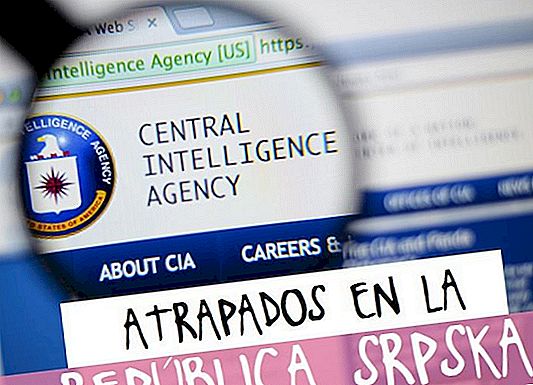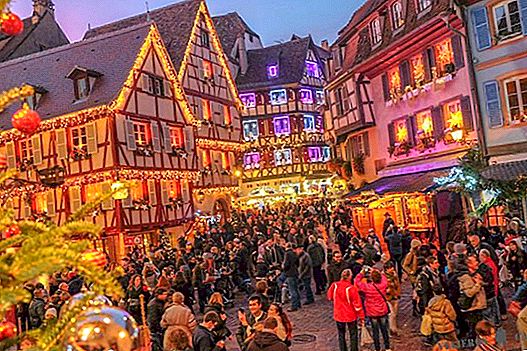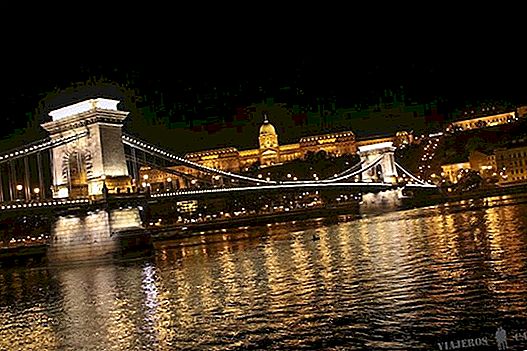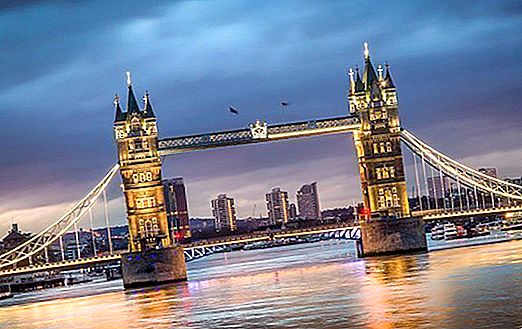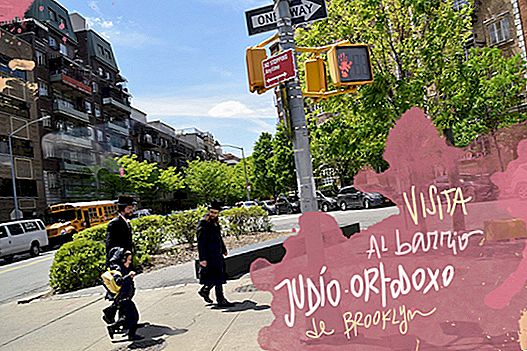Day 3: Beijing: The Temple of Heaven, Pearl Market, Drum Tower, Bell Tower, Qianhai Lake, Nanluogu Hutong, Suoyi Hutong, Wangfujing
The alarm sounds at 6 in the morning. We are busted after being all day without sleep and taking advantage of the afternoon to see some of the most emblematic places like the Temple of the Lamas in Beijing, but today we have a most complete day, including a visit to the Temple of Heaven in Beijing, so it's time to get going.
Yesterday we saw that there were several bars / cafeteria around the 161 Hotel where we stayed and where we don't have breakfast included, so after 7 am we left our accommodation in Lishi Hutong and we got the surprise of the day: everything is still there closed, something that makes us suspect that here in China does not start "life"as soon as we thought.
We have no choice but to approach the McCafé where we ate yesterday and ask for a couple of muffins, more American and capucchino for 60RMB.
With our stomach already toned and with enough energy to continue our trip to China for free, we go to the Donsi metro station and take a ticket to Tiananmen Square for 3RMB per person
We observe that, here in Beijing, the topics we had read are not fulfilled, perhaps because we are in the capital, but they are not spitting all day, in the subway it is not pushed "always", if not only when it does not fit and you have to make room. They do not say that do not constantly, they only do it when they can't help you or are ashamed to speak English. Nor do they stare at you. They look like we would do in a town where there are never tourists and suddenly a Chinese appears 😉
We arrive at Tiananmen Square after making a transfer in Dongdan a few minutes before 8.30 in the morning and we meet again with the same controls we saw last night.
We go straight to one of the accesses and do not give credit seeing all the people who are queuing to pass it. How is it possible that all of China is here?
Just to cross the street, (yes, yes, cross the street. Here even for that they put controls), and access the Tiananmen Square We have to make a queue in which we are more than 45 minutes, as it passes through batches and after crossing the street and arriving at the square, we must pass a new security check. All this imprisoned by hundreds of Chinese who want to be in front of you as if there was no tomorrow. A little overwhelming, so we're going to fool ourselves.
Crossed the street and passed the security checkpoint, we access the Tiananmen Square and finally, after waiting, we have one of the views we are used to when we watch any report from Beijing.
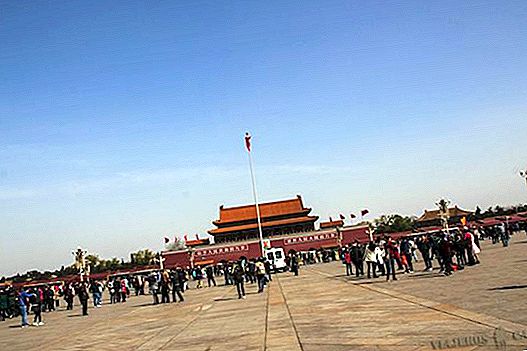
Tiananmen Square in Beijing
If to pass control there were people, within the Tiananmen Square, there are already crowds, so we try to take it easy and wait to access the different tourist and historical points of the place.
The first impression we will take from theTiananmen Square It is surrounded by vast buildings. Not surprisingly, this is totally true, since it is surrounded by Soviet-style buildings of the 1950s. A part is surrounded by fences in its entirety, so you can imagine how it is the largest square in the world, fully fenced, without any direct access in which there is no security check.
Once inside we find the Gate of Heavenly Peace, with a huge portrait of Mao, where he proclaimed the People's Republic of China in 1949.
We also found the Front door or Qianmen. Although by name we might think it is a single door, there are actually two, the north door is the Zhègyáng Gate, of the Ming dynasty and the southern gate or Zhègyáng Gate of the Arrow Tower.
Here we will also find one of the most named and known places, the Mao's Mausoleum, where the mummified body of President Mao is located since he died in 1976.
The idea after knowing the Tiananmen SquareIt is to enter the Mao Mausoleum and then in the Forbidden City, but for some reason that we do not know, we believe that today is a holiday here, the queues of people are endless and many of the accesses to the tourist places are cut, so intuiting that We will spend much of the day between queues, we choose to change the order of the visits we had in the planning planned for today and we decided to go to the Temple of Heaven in Beijing.
A good option to learn more about the history of the Temple of Heaven is to book this guided tour in Spanish that also includes the Summer Palace or this tour in Spanish that includes the Forbidden City.
We return the subway, to go to Dongan and from there to Tiantan Dongmen, which is the subway stop of the Temple of Heaven.
More practical information to prepare your trip to Beijing
- 50 things to see and do in Beijing
- 10 essential places to visit in China
- 10 essential tips for traveling to China
- The best travel insurance for China
We arrive at 11 in the morning and with a blue sky and a sun that begins to heat more than we imagined, breaking another of the topics that says that in Beijing the sky is always gray, we stop at the ticket offices where we pay 28RMB per person, with the student card, if it had not been 35RMB. You can book this ticket without queues in advance.
We begin the visit by taking a walk in the park, crossing with many people playing cards, dominoes and different board games, which let us see another type of social life to which we are accustomed.
And when we thought we had gotten rid of the crowd, we arrived at the entrance area of the Temple of Heaven in Beijing and, how could it be otherwise, the tails return.
Definitely the worst of the day. We hope that this is not usually the case because if we are not going to spend part of the trip in the very long lines that are formed to enter the main monuments.
In the end it is after 11.30 in the morning when we finally access the Temple of Heaven in Beijing.
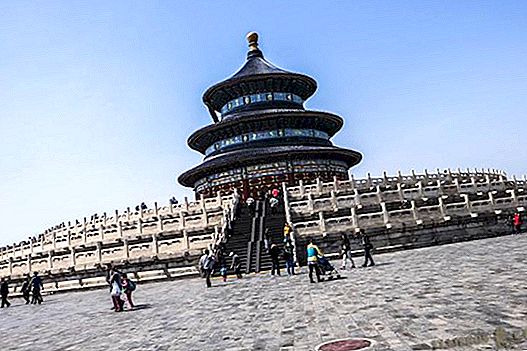
Temple of Heaven in Beijing
Upon entering we are in a true oasis of peace in the middle of the city. The Temple of Heaven in Beijing It is not just a temple proper, it is an enclosure of 267 hectares surrounded by a wall with a door at each cardinal point.
Your name means "Altar of Heaven"and in its origins it was the scene of the rituals carried out by the emperor of the time, who received the title of"son of heaven".
The most important structure is the Hall of Prayer for Good Harvests, a construction with a purple roof mounted on a three-tier marble terrace.
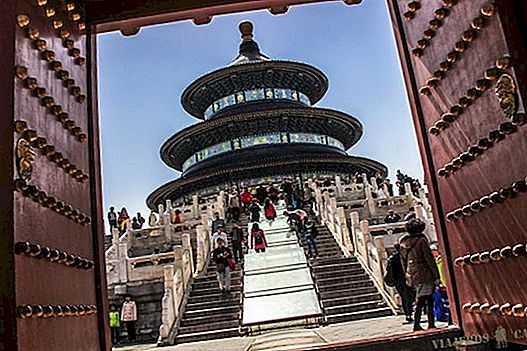
The Temple of Heaven in Beijing
One of the curiosities is that the wooden pillars that hold the roof have neither nails nor cement, a whole engineering work if we think it is 38 meters high and 30 meters in diameter.
Going south we reach the Imperial Vault of Heaven, with a structure very similar to that of Hall of Prayer for Good Harvests.
Around of the Imperial Vault of Heaven we found the eco wall, 5 meters high, where they say a whisper is heard clearly from one end to the other. We do not try it, but if you are lucky enough to go one day when there is no one (something quite unlikely), do not forget to try it 😉
South of eco wall is he Circular altar, 5 meters high, which consists of three layers of white marble and all its geometry revolves around the number 9, the imperial number.
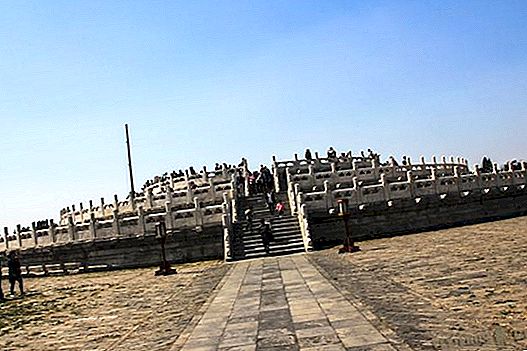
Circular altar
The upper layer symbolizes the sky and is a mosaic of 9 rings, each consisting of 9 stones, so that the ninth ring is equivalent to 81 stones.
After enjoying one of the most special places we have ever been, after 1 noon we go straight to Pearl Market, taking advantage that it is right next to the Heaven Temple.
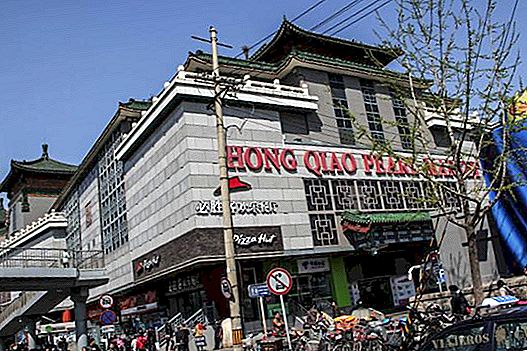
Pearl Market in Beijing
The Pearl Market is nothing more than a 4-story shopping center, with a couple of them completely dedicated to the sale of jewelry and pearls. But the best without a doubt about this place are not the things you can find in it. We are not going to lie to you and the truth is that we have not come here precisely to buy, if not for its panoramic terrace, located on the top floor, from where you have a unique perspective of the Temple of Heaven in Beijing.
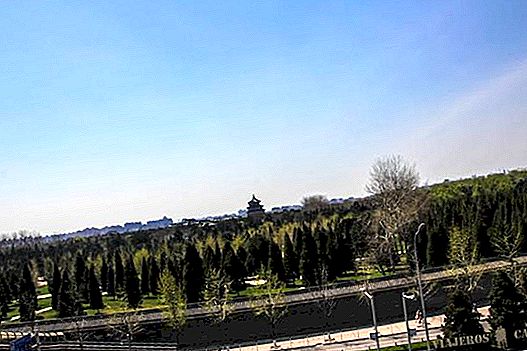
Temple of Heaven from the Pearl Market
After a good time enjoying the views and when it is time to recharge our energy, we go in search of a place to eat, something that, contrary to what it may seem, is not especially easy and less in this area where there are not many sites to choose from.
After several laps we end up in an area, right next to the Pearl Market, buffet style where there are many places and you can take what you want from each kiosk there is. There they give you different accounts that you pay at the end of the box and you sit down to eat at the tables in the central area.
We ordered a plate of rice, another of fish, noodles and spring rolls (by the way, nothing similar to those we know of the usual Spanish Chinese restaurants) plus water and coke for 85RMB.
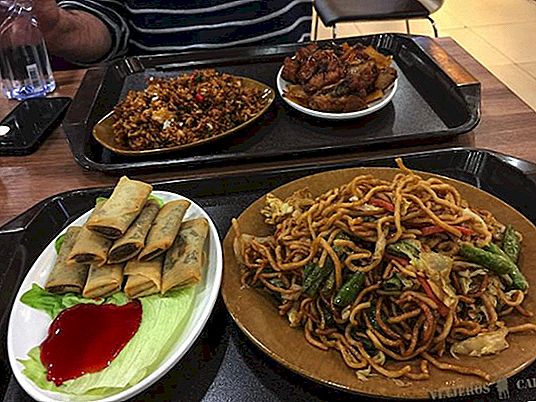
Eating in the Pearl Market area in Beijing
After two in the afternoon we go out with renewed energy and willing to continue with the planning, which after setback This morning, we have remodeled.
We return to the subway, now direction to the Drum Tower and Bell Tower, for which we take line 5 until Temple of the Lamas in Beijing, this time 4RMB per person and then line 2 to Guloudiajie.
From here we have about 10 minutes walking until we reach the area where both towers are located, touring some of the Beijing's most authentic hutongs.
On the way we see a cafeteria, something that we have already confirmed that it is not usual in China, so we took the opportunity to have an American and a coffee with milk for 67RMB.
It is clear that coffee here is not exactly cheap and it has cost us almost like food, but at this time of the afternoon, we can not be longer without our usual dose.
We follow the street until we reach theDrum Tower and Bell Tower and seeing that it is almost time to close we decided to enter only the Drum Tower, from where we have read that there are spectacular views of the surroundings.
A good option to explore the hutongs, the Lamas temple and the modern part of Beijing is to book this tour of contrasts with a guide in Spanish.
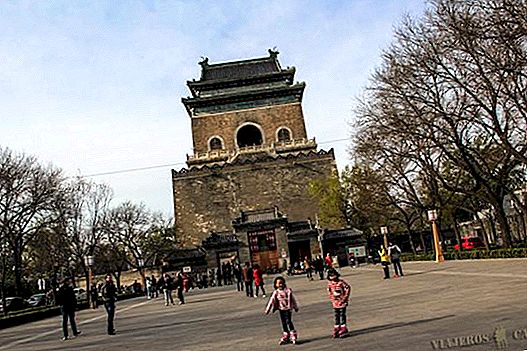
Bell Tower
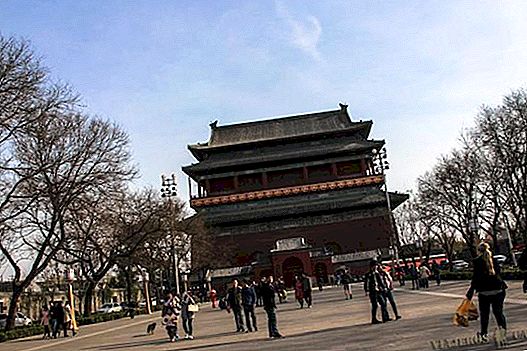
Drum Tower
We pay 20RMB per person, here there is no discount for having the student card and climbing the steep stairs (my vertigo does not make me pass too well) and after walking around the room, we went to the panoramic area to enjoy some spectacular views over the hutongs of the area.
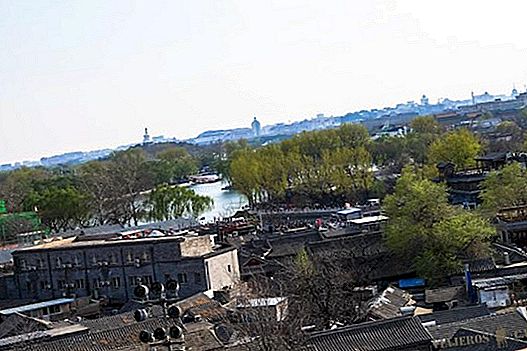
Views from the Drum Tower
After going down the stairs, this time with much more care than when we climbed them since the inclination sometimes causes us to lose our balance, we follow the road that goes to the Forbidden City and we enter Yandai, a lively area of Beijing, with many terraces, cafes, shops and a most pleasant atmosphere.
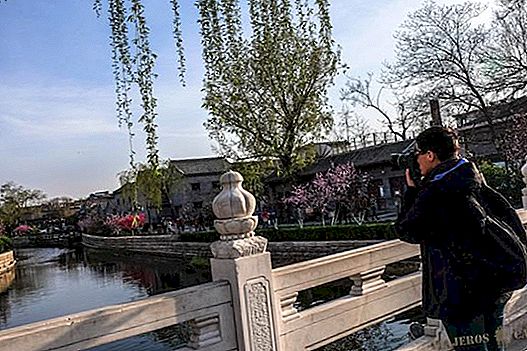
Yandai
The closer we get to Qianhai Lake, the more lively the area is, with the most terraces and bars hippies where we would stay for a drink if it weren't for all the things we still have today to do.
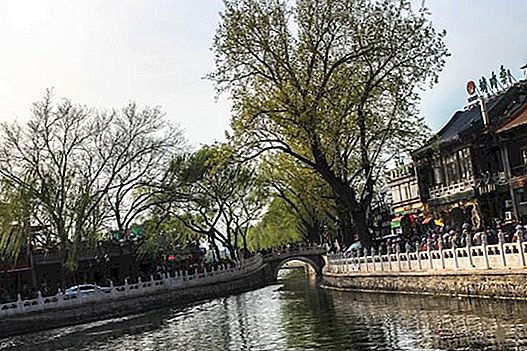
Qianhai Lake
We continue through the area and head towards Nanluogu Hutong one of the best known in the area and more authentic, where the atmosphere is again the liveliest mixing stores with the most gastronomic smells, although not all pleasant, at least for us, with craft shops of the most varied. By now we are beginning to intuit that in China food smells will be commonplace.
Book the best rated tours and excursions in Spanish from Beijing by travelers:
- Excursion to the Great Wall of China
- Beijing's Top 3 in one day
- Beijing contrasts
- Temple of Heaven and Summer Palace
- Acrobatic show at the Chaoyang Theater
- More excursions and tours here
We pass to Suoyi Hutong, another of the liveliest alleys in the area and we continue to get lost among the streets, this being the best way to get to know this part of Beijing, where we can get to know the most traditional part of the city.

Hutong in Beijing
And so, losing ourselves, we reached some of the most authentic alleys, of those we were looking for and we had not just found in this area of the city.
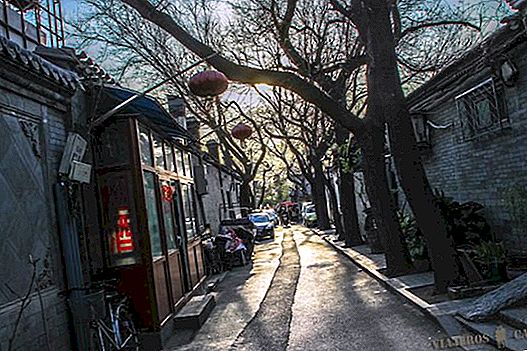
The afternoon begins to fall in Beijing
After a good time lost we ended up going out in the river area and it was already 6 in the afternoon and with the sun almost setting, we decided that the time has come to go to the Beijing Central Station, where we want to see if you can pick up all the electronic train tickets that we book with ChinaDIYTravel, as we commented in the preparations for the trip to China and thus go much quieter the rest of the trip without having to be every time we have a journey going to the collection offices of each station.
We take a couple of meters and as soon as we get to Beijing Central Station we go straight to the Office Ticket which is on the left side of the station.
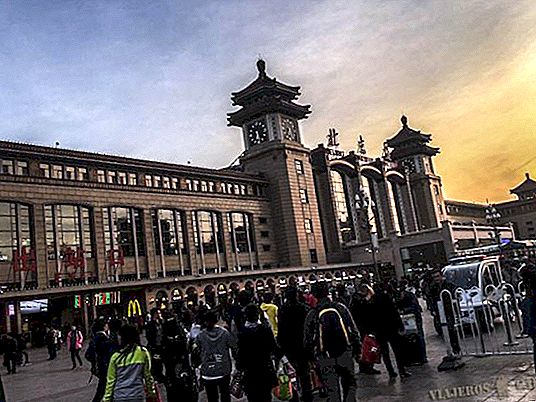
Beijing train station
Although we look for the symbol Internet (网) As we were told from ChinaDIYTravel, we did not find it, so we go to the box office number 16 which indicates how they attend in English.
Upon arrival the woman tells us that do not With his face and hands, without speaking English, he urges us to go to the box office next door. The second closes his window and leaves without further ado.
We go to the one next to it and when we say in English to the boy that we come to pick up some tickets issued online, he tells us directly do not with the head.
Knowing that it is usual for them to do this, we do not give up. We take out the electronic tickets we have for the day after tomorrow from Beijing to Datong and show them to them. Then he tells us that yes with the head, but with the help of the calculator shows us that we have to pay 10RMB to collect them before.
We had already read that you have to pay that amount if you pick up train tickets some day in advance or at a station other than the one of origin, so since we have 7 train trips and we do not want to be at each station wasting time collecting the tickets, we prefer to pay 70RMB and take us all the routes we need for our trip to China for free.
It is after 7 pm when we have just collected all our tickets at the watchful eye of the rest of the Chinese who stand in line, and although the idea was to approach the Olympic area of Beijing, today we are defeated so we changed a bit the plan and we go back to the subway to go to Wangfujing, the night market area more gastronomic from Beijing, where we want to go for a walk before dinner.
Wangfujing is not only the Beijing bug marketWangfujing is also one of the most important commercial areas of Beijing.
On the street we can find large shopping centers and numerous stores where you can buy anything that comes to mind.
But if you only want to go to Beijing bug market, from the exit of the subway you have to go to the wide illuminated street that is perpendicular to the exit of the station and once there, on Wangfujing Street walk a few meters and on the left you will see an alley all adorned and full of people . There it is!
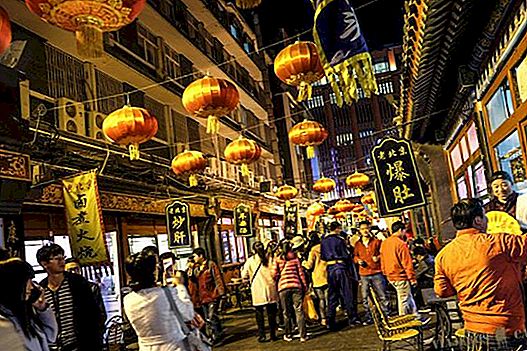
Wangfujing Night Market
This area of Beijing is also very crowded and the truth is that there are times when it costs to walk. As we enter the alley, an explosion of smells and visual perceptions leaves us, leaving us the least amazed.
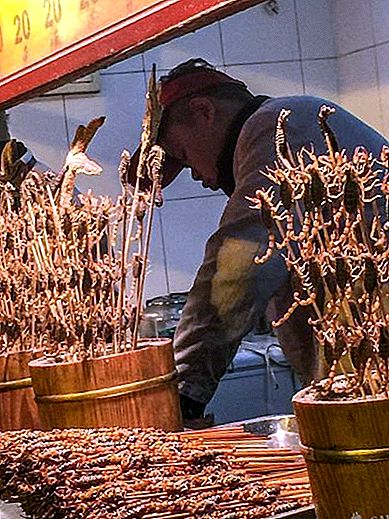
Scorpions in the Beijing bug market
We tried some chicken gyozas for 30RMB and some potatoes for 20RMB that we already tried on our trip to Japan for free and although we hoped they were only an appetizer, they have finally become our dinner today.
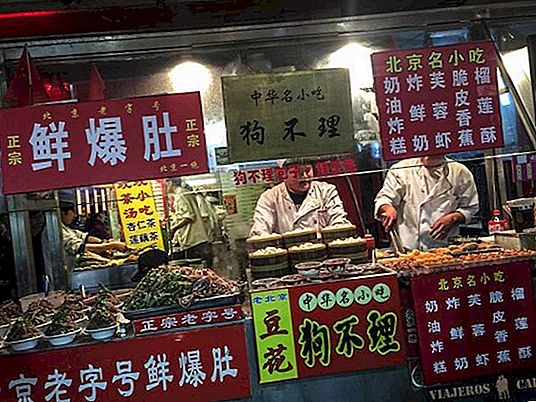
Food stalls in Wangfujing
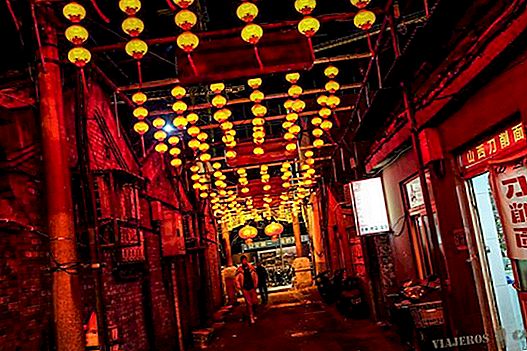
Color in the streets of Wangfujing
It's 9:30 at night and our bodies and especially our legs tell us that the time has come to stop. Tomorrow we have a most complete day: the trekking between the Jinshanling and Simatai sectors in the Great Wall of China awaits us and we need to rest.
We take the subway again (in this city it is impossible to move without doing so since it is immense) and we return home, the 161 Hotel that awaits us with open arms.
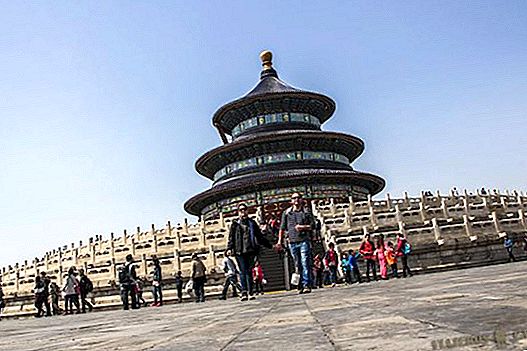
Hall of Prayer for Good Harvests
 Day 4: Beijing - Trekking between Jinshanling and Simatai on the Great Wall of China - Beijing
Day 4: Beijing - Trekking between Jinshanling and Simatai on the Great Wall of China - Beijing

 Book the best rated tours and excursions in Spanish from Beijing by travelers:
Book the best rated tours and excursions in Spanish from Beijing by travelers: